The Granary Burying Ground, the city’s third-oldest cemetery, dates to 1660. A major stop in our Freedom Trail Tour, it is steps away from Boston Common and is shadowed by the towering skyscrapers of the city’s Financial District (however, just a few moments here made me forget that I was in the center of a large city). It was Independence Day when Jandy and I visited and the graves of famous personalities buried there where marked with US flags and floral wreaths. Guides, in American Colonial attire, were busy touring visitors around the cemetery.
Check out “Freedom Trail“
This cemetery is the final resting place of many notable Revolutionary War-era patriots such as Paul Revere (pedestal-shaped gravestone behind the Franklin Memorial) , the five victims (including African-American Crispus Attucks) of the March 5, 1770 Boston Massacre (in a common grave near the Tremont Street entrance) and three signers of the Declaration of Independence – Samuel Adams, John Hancock and Robert Treat Paine (at the side of a brick wall).
As such, because of its historical connections, this quiet but fascinating, tree-filled, shade-dappled ground has been sometimes called the “Westminster Abbey” of Boston. After 1856, most burials were prohibited here.
The cemetery, adjacent to Park Street Church and immediately across from Suffolk University Law School, has 2,345 grave-markers and 204 tombs but historians estimate that as many as 5,000 people are buried in it. The reason for this is that, to save money and space, many of the graves have multiple bodies buried, four deep, under one headstone, something that was common in most old burial grounds.
Formerly known as the New Burying Ground and South Burying Ground, in 1737 it took on the name of the Old Town Granary, the granary building which stood on the site of the present-day Park Street Church. An attempt was also made to change the name to “Franklin Cemetery,” to honor the family of Benjamin Franklin, but the effort failed.
The cemetery’s striking and imposing but decidedly uncolonial Egyptian Revival iron gate and fence along Tremont Street, designed in 1840 by Boston sculptor and architect Isaiah Rogers (the supervising architect of the Ohio State House, he also designed an identical gate for Newport’s Touro Cemetery and the Bunker Hill Monument), was built at a cost of US$5,000 (half paid by the city and half by public subscription).
A 21-ft. high obelisk, constructed with granite from the Bunker Hill Monument quarry and dedicated on June 15, 1827, was erected to replace the original gravestones (which had been in poor condition) of the parents and relatives of Benjamin Franklin (he was born in Boston but is buried in Philadelphia, Pennsylvania). Josiah Franklin, Franklin’s father, was originally from Ecton, Northamptonshire, England while his mother, Abiah (Josiah’s second wife), was born in Nantucket.
The second oldest memorial, for John Wakefield (who died on June 18, 1667, aged 52), lies near the Franklin monument. Many of the 17th century grave stones are carved with elaborate letters, death’s heads, and fruits of paradise. The oldest grave stone, that of the children of Andrew Neal, was carved by the ‘Charlestown Carver’ and dates to 1666.
Other prominent people buried here include:
- John Endecott (c. 1588 – March 15, 1665) – first governor of Massachusetts Bay Colony
- Peter Faneuil (1700–1743) – benefactor of Faneuil Hall
- Mary Goose (1665–1758) – falsely publicized as being the original Mother Goose
- Jeremiah Gridley (1702–1767) – lawyer, defender of writs of assistance in 1761
- James Otis (1725–1783) – lawyer, Revolutionary War Patriot
- John Phillips (1770–1823) – first mayor of the city of Boston
- Wendell Phillips (November 29, 1811 – February 2, 1884) – American abolitionist, advocate for Native Americans, orator, and attorney
- Edward Rawson (1615–1693) – first secretary of the Massachusetts Bay Colony (1650–1686)
- Christopher Seider (sometimes Snider) – a boy killed 11 days before the Boston Massacre.
- Samuel Sewall (1652–1730) – Salem Witch trials judge
- John Smibert (1688–1751) – Scottish-American artist
- Cyprian Southack (1662–1745) – cartographer and naval commander
- Increase Sumner(1746–1799) – fifth governor of Massachusetts
- Nathan Webb, (1705–1772) – pastured, for over 41 years, the first new Congregational Church (started during the Great Awakening period) in Massachusetts
- Benjamin Woodbridge (1708–1728) – victim of the first duel fought in Boston
Granary Burying Ground: Tremont Street an Bloomfield Street, Boston MA 02108, Massachusetts. Open daily, 9 AM – 5PM. Tel: 617-635-4505. Admission is free. To keep the burial ground protected, please make sure you stay on the designated paths.
How to Get There: If you are arriving by public transportation, take the Red and Green Lines/Park Street, the closest T station, to Boston Common and walk northeast on Tremont Street towards the Park St Church. Past the church you’ll find the Granary Burial Ground.

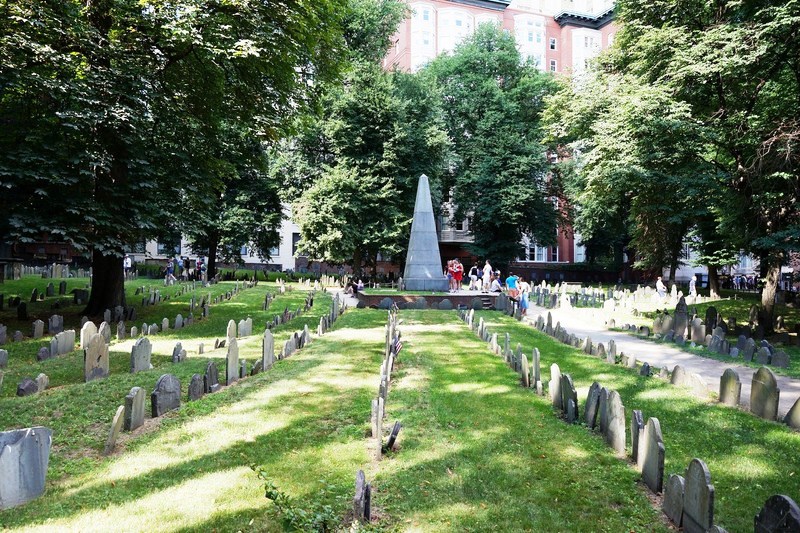
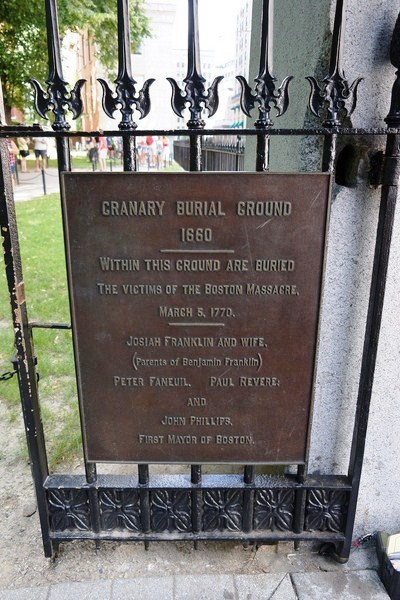
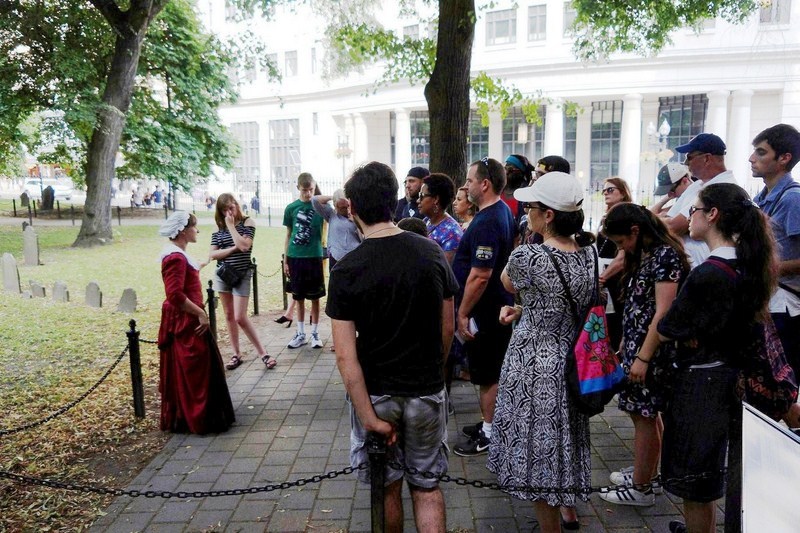
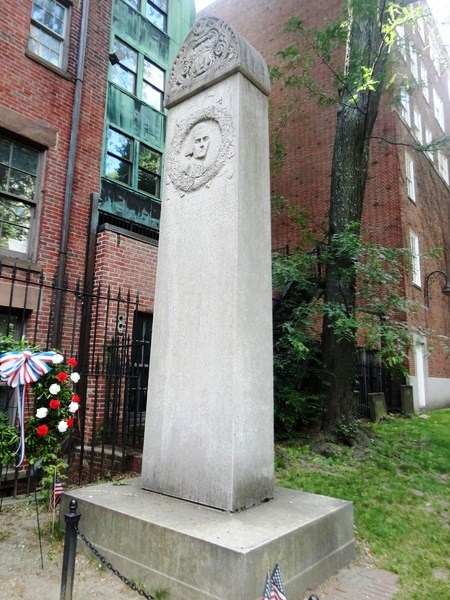
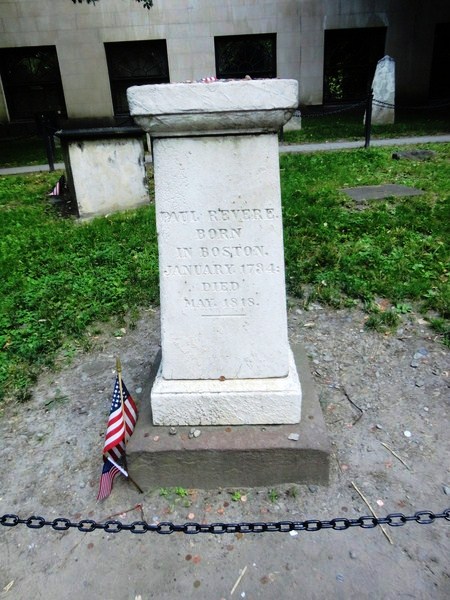
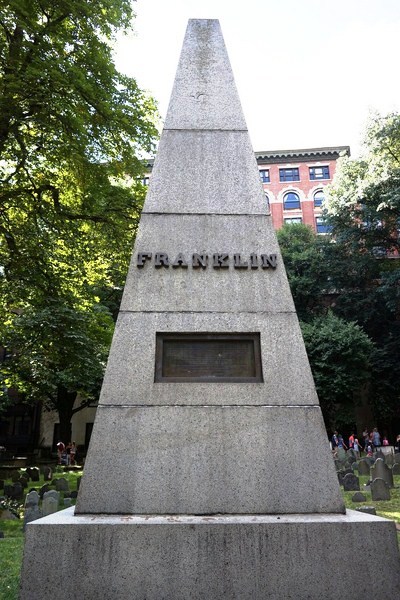
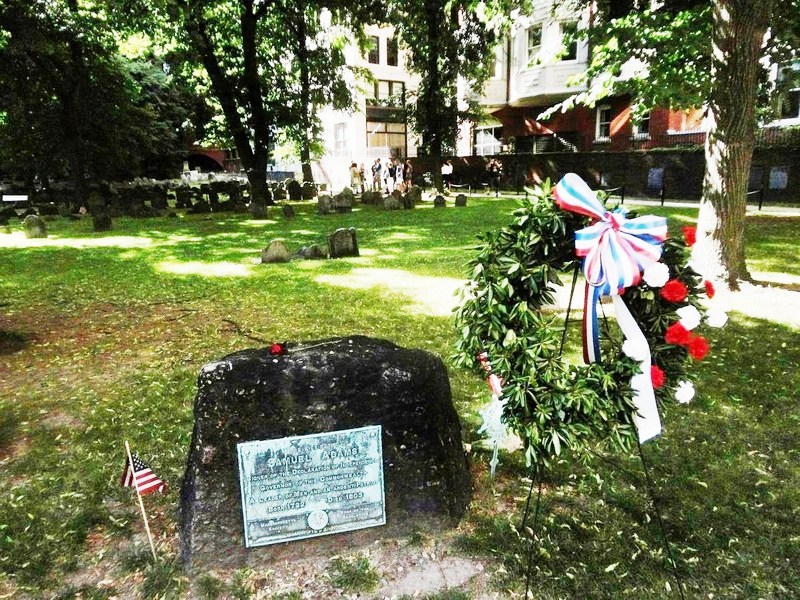
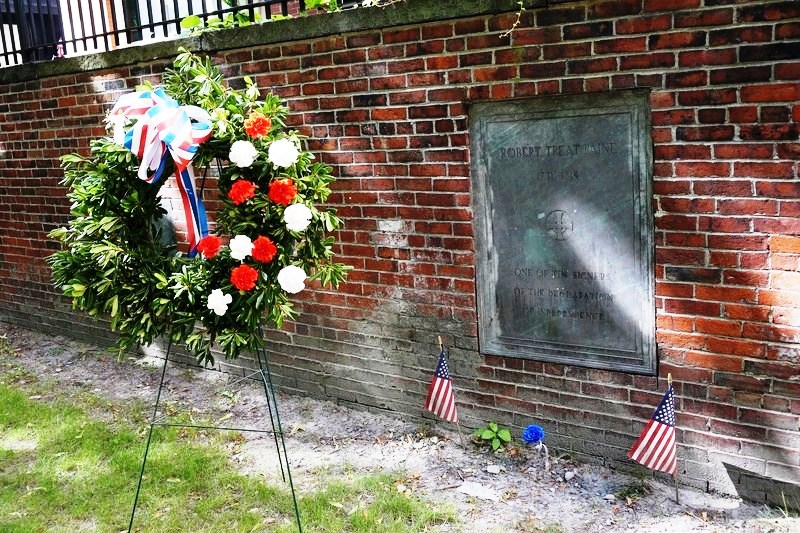
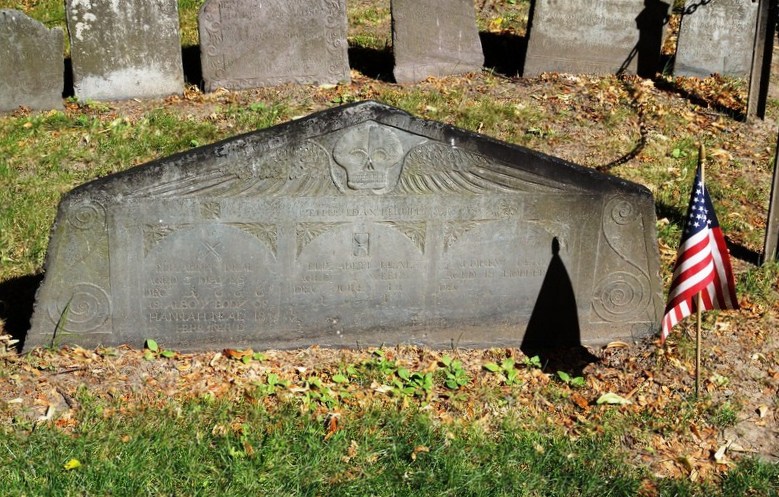
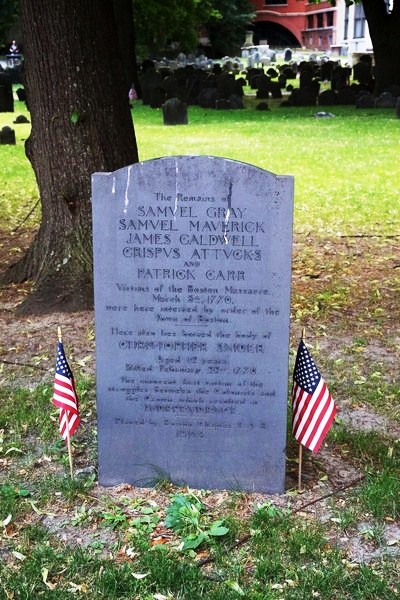
Pingback: Freedom Trail (Boston, Massachusetts, U.S.A.) – B.L.A.S.T. – Live Life to the Fullest ……… Don't Stay Put